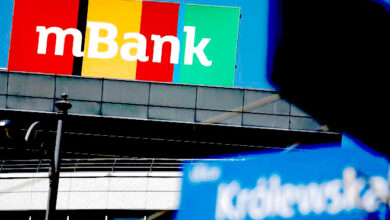As U.S. CPI statistics and a Fed meeting approach, options traders prepare for significant swings.

Before important inflation data, the Federal Reserve’s final policy meeting of 2022, and the last monthly options expiration of the year, options traders are preparing for a week of swings in U.S. markets.
The trajectory of a late-year stock rally that has seen the S&P 500 bounce 14% off its October lows could be determined by inflation data and the Fed’s outlook on monetary policy, which could provide traders with more clarity on how much further the central bank may need to raise rates in its fight to cool consumer prices. For the year, the index is still down 17%.
Related: European stock futures are going down; the focus is on Chinese PMI and Eurozone CPI data.
According to pricing in the U.S. options market on Monday, investors were positioning themselves for the S&P 500 to move 2.5% either way after the consumer price report on Tuesday, which covers November. This was indicated by data from the options market-making firm Optiver.
A significant change would be expected in a year in which CPI figures have provoked violent market gyrations and pushed the Fed to implement its most aggressive monetary policy tightening since the 1980s in response to soaring inflation.
Over the previous six CPI announcements, the S&P 500 has fluctuated by about 3% on average in either direction, with a 5.5% increase on Nov. 10 when inflation data was weaker than anticipated. Comparatively, over the same time period, there was an average daily movement of roughly 1.2%.
The case for those who believe that inflation may have peaked may be strengthened by a second round of softer-than-expected inflation figures.
However, “the market is signalling what may be an even bigger move to the downside if inflation comes in considerably higher than anticipated,” said Tom Borgen-Davis, head of equities research at Optiver, “with the October CPI report having spurred such an outsized positive reaction.”
In the meantime, according to Optiver data, options pricing forecast a 1.8% movement for the S&P 500 in either direction in the hour following Wednesday’s FOMC decision.
While Wall Street will be focused on the Fed’s estimates for how high rates will ultimately rise and to what extent the U.S. economy can sustain monetary tightening, investors expect the central bank to hike rates by 50 basis points.
The final monthly options expiration of the year is on Friday, which might lead to a spike in trading activity from traders wanting to replace a large number of expiring contracts.
According to Brent Kochuba, the founder of the options analytic firm SpotGamma, options positioning is currently “extremely balanced between calls and puts,” providing little clue as to which direction traders anticipate the markets will move following the events of Tuesday and Wednesday.
According to Kochuba, this strategic balance may serve to reduce the turbulence surrounding the FOMC decision. The stock market might be more susceptible to swings in either direction after this week’s options expiration, he said.
Related: The dollar falls as more people expect the Fed to be less hawkish; Australian stocks rise following CPI.
The Fed will choose how that shift is made, according to Kochuba.





